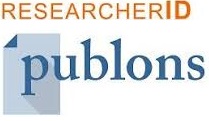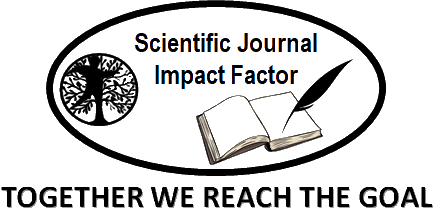Mathematical Word Problems Translation And Students’ Ability In Secondary Schools In Rivers State, Nigeria
Abstract
Keywords
Full Text:
PDFReferences
. Boonen, A.J., de koning B.B., Jolles, J. & van der schoot, M. (2016). Word problem solving in contemporary mathematics education: A plea for reading comprehension skills training. Retrieved on 21/04/2017 from europepmc.org>abstract>med doi: 10.3389/fpsyg.2016.00191
. Boonen, A.J.H. & Jolles, J. (2015). Second grade elementary school students’ differing performance on combine, change and compare word problems. International Journal of School and Cognitive Psychology. Retrieved on 05/02/2017 from http://www.omicsonline.org>open-acess doi: 10.4172/1234-3425.1000122
. Gooding, S. (2009). Children’s difficulties with mathematical word problem. Proceedings of the British Society for Research into Learning Mathematics, 29(3). Retrieved on 23/06/2016 from www.bsrlm.org.uk>
. Kilpatrick, J., Swafford, J., & Findell, B. (2022). Adding it up: Helping children understand math. National Academy Press.
. Kwangmuang, P., Janet Kamolpong, S., Sangbooniraving, W., & Daungtod, S. (2021). The development of learning innovation to enhance higher order thinking skills for students in Thailand junior high schools. Heliyon 7(6) e07309 http://doi.org/10.1016/i. heliyon. 2021.e07309
. Laciste, Jr, G. L., & Capua, R. D. G. (2021). Senior High School Students’ Ability in Mathematical Word Problems. EDUCATUM Journal of Science, Mathematics and Technology, 8(1), 70-83. https://doi.org/10.37134/ejsmt.vol8.1.8.2021
. Lakoff, G., & Núñez, R. E. (2023). Where mathematics comes from: How the embodied mind brings mathematics into being. Basic Books.
. Nurrahmawati, Cholis Sa’dijah, Sudirman, Makbul Muksar (2021). Assessing students’ errors in mathematical translation: From symbolic to verbal and graphic representations. International Journal of Evaluation and Research in Education (IJERE) Vol. 10 (1), 115-125.
. Ogbu, S. (2025). Assessment Of Secondary School Students’ Difficulties in Translating Word Problems into Algebraic Equations. Journal Plus Education. 37(1), 302-322.
. Rossi, C. (2020). On measuring ancient Egyptian architecture. The Journal of Egyptian Archaeology, 106(1-2), 229-238.106(1), 71-84.
. Schoenfeld, A. H. (2024). Mathematical problem solving: A cognitive science perspective. In A. H. Schoenfeld (Ed.), Cognitive science and mathematics education (pp. 123-145). Routledge.
. Schreiber, I., & Ashkenazi, H. (2024). The impact of various teaching methods on the knowledge of students of different genders: The case of mathematics word problems.
. Seifi, M Haghverdi, M, & Azizmohamadi, F (2012). Recognition of students difficulties in solving mathematical word problems from the viewpoint of Basic and Applied Scientific Research, 2(3) 2923-2928.
. Van de Walle, J. A., Karp, K. S., & Bay-Williams, J. M. (2016). Elementary and middle school mathematics: Teaching developmentally (11th ed.). Pearson.
. Verschaffel, L., Schukajlow, S., Star, J., & Van Dooren W. (2020). Word Problems in Mathematics education; A survey ZDM, 52(1), 1-16. https://doi.org/10.1007/s11858-020-01130-4
. Wang, Y., Zhang, P., Tang, J., Wei, H., Yang, B., Wang, R., ... & Zhou, J. (2025). PolyMath: Evaluating Mathematical Reasoning in Multilingual Contexts. arXiv preprint arXiv:2504.18428.
DOI: http://dx.doi.org/10.52155/ijpsat.v50.2.7245
Refbacks
- There are currently no refbacks.
Copyright (c) 2025 Gladys Ibibo CHARLES-OGAN

This work is licensed under a Creative Commons Attribution 4.0 International License.



















